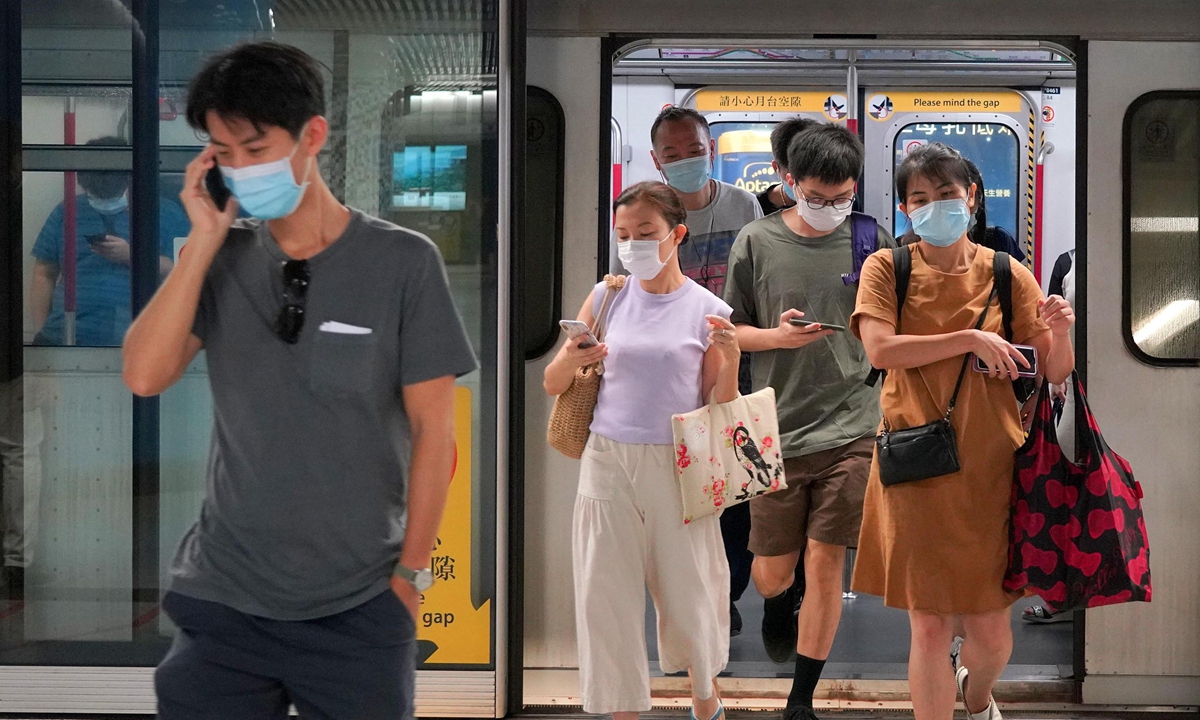HK infections risk spread to Shenzhen
By Liu Caiyu, Fan Anqi and Zhao Yusha Source: Global Times Published: 2020/7/27 23:18:24
Ports must quickly identify silent virus carriers, reduce threat: experts

Photo:VCG
A truck driver traveling between Hong Kong and the Chinese mainland was confirmed with COVID-19 infection, prompting the neighboring mainland city of Shenzhen to test thousands of residents and step up measures to prevent the port from becoming a loophole in mainland's epidemic control work.
Given frequent interaction between the two sides and the worsening infection situation in Hong Kong, analysts said Shenzhen ports as well as nearby cities should raise entry requirements and conduct more tests to identify silent carriers and reduce transmission risks.
Hong Kong needs to enhance its testing capabilities and expand the scale to track silent carriers, and bring the epidemic under control. Otherwise, smooth people interactions and goods transport between Hong Kong and the mainland would be impossible, analysts said.
The Hong Kong-based truck driver, surnamed Zhu, had been to several places in Shenzhen and Dongguan, another city in Guangdong, during his stay. Shenzhen is testing residents in the living compound and other places where Zhu had been to and Dongguan is tracking close contacts and giving free nucleic acid tests.
Shenzhen authorities have found nine close contacts of Zhu, with eight people testing negative and one still waiting for the result as of Monday night.
Zhu entered Shenzhen on July 18 when truck drivers were exempted from providing negative nucleic acid tests and completed a 14-day quarantine that could be done in Hong Kong.
Starting Thursday, truck drivers were required a nucleic acid test to travel between the two sides and more than 5,000 drivers were tested that day.
Shenzhen has also stopped recognizing quarantine in Hong Kong.
Wang Peiyu, a deputy head of Peking University's School of Public Health, said it is unrealistic to completely shut down the ports between Hong Kong and Shenzhen given the frequent interactions.
A more realistic method to prevent the virus from spreading across is that the Shenzhen side should manage to identify silent virus carriers and give repeated tests if necessary to reduce the risks of allowing people with false-negative nucleic acid tests in, Wang told the Global Times.
Zhu was tested negative when he entered Shenzhen and Wang said current coronavirus nucleic acid tests could have 10 percent of false-negative results, adding that the driver might have received a false-negative nucleic acid result.
There is also the possibility that Zhu was infected after he returned to Hong Kong on Wednesday.
Since it is unclear how Zhu was infected, both Hong Kong and Shenzhen should expand testing to track silent carriers, said Jin Dongyan, a biomedical professor at the University of Hong Kong.
Hong Kong on Monday also stepped up measures including a complete dine-in ban and the shutdown of sports venues starting from Wednesday as the city reported a record 145 infections, marking the sixth consecutive day with more than 100 cases.
Group gathering restrictions will be reduced from four to two persons and wearing masks is required at all indoor and outdoor public places, a local official said.
Keiji Fukuda, a clinical professor at the University of Hong Kong's School of Public Health, told the Global Times on Monday that the current epidemic in Hong Kong is severe and difficult, but he expects the upgraded control measures to bring new cases down in the next two weeks.
The goal for Hong Kong, a populous city that does not want a complete lockdown, is to keep the number of asymptomatic infections low rather than entirely clearing up the infections, Fukuda said, noting the precise number of silent cases in Hong Kong remains unknown.
Posted in: SOCIETY